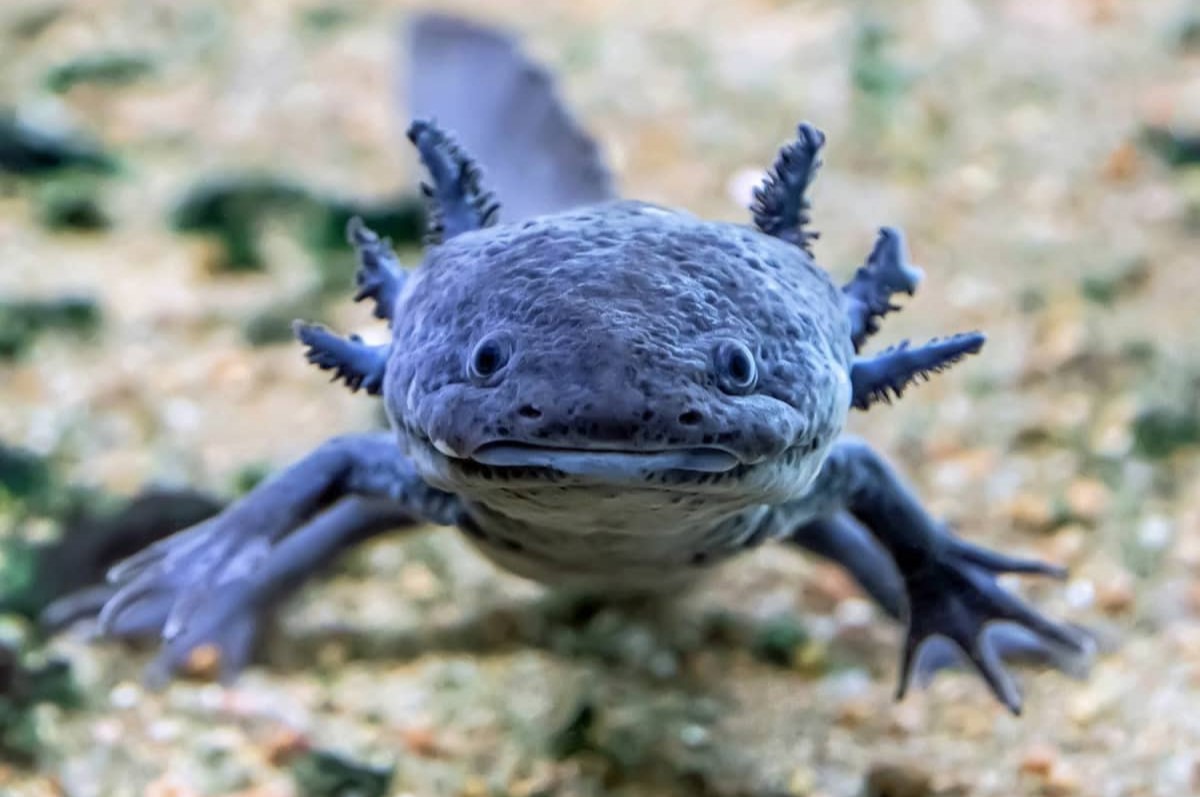
Did you know some animals can regenerate lost body parts? It's true! Nature has some incredible tricks up its sleeve. From starfish regrowing arms to salamanders regenerating limbs, these creatures have abilities that seem straight out of a sci-fi movie. Imagine losing a limb and having it grow back perfectly! This isn't just limited to small critters either. Some lizards can regrow their tails, and even certain types of fish can regenerate parts of their hearts. These amazing feats of regeneration have fascinated scientists for years, leading to research that could one day help humans heal more effectively. Ready to dive into the world of animal regeneration? Let's explore 50 fascinating facts about these remarkable creatures and their superpowers!
Key Takeaways:
- Some animals, like axolotls and starfish, have incredible regenerative abilities, allowing them to regrow lost limbs and body parts, which helps them survive in their environments.
- From sea creatures to insects and even mammals, many animals have the remarkable ability to regenerate lost body parts, enabling them to recover from injuries and continue their life cycles.
Regeneration in the Animal Kingdom
Regeneration is a fascinating ability some animals possess, allowing them to regrow lost body parts. This remarkable trait can be found across various species, each with unique regenerative capabilities.
- Axolotls can regenerate entire limbs, spinal cords, hearts, and even parts of their brains. These amphibians are often studied for their incredible healing abilities.
- Starfish can regrow lost arms, and in some cases, an entire starfish can regenerate from a single arm fragment.
- Planarian flatworms can regenerate their entire bodies from just a small piece. They possess pluripotent stem cells that enable this remarkable feat.
- Deer regrow their antlers annually. This process is one of the fastest examples of mammalian regeneration.
- Lizards can regenerate their tails. The new tail is usually not an exact replica but serves the same function.
Marine Marvels
The ocean is home to many creatures with extraordinary regenerative abilities. These animals often use regeneration as a survival mechanism.
- Sea cucumbers can expel their internal organs to escape predators and regenerate them later.
- Sponges can regenerate from small fragments. They can even reassemble themselves if broken apart.
- Jellyfish can revert to their juvenile form after reaching adulthood, essentially allowing them to live indefinitely.
- Crabs can regenerate lost claws. The new claw grows back over several molts.
- Sea squirts can regenerate their siphons and other body parts. They are closely related to vertebrates, making them interesting for scientific research.
Land-Dwelling Regenerators
On land, several animals exhibit impressive regenerative abilities. These creatures often use regeneration to recover from injuries or escape predators.
- Newts can regenerate limbs, eyes, hearts, and even parts of their brains. They are closely related to salamanders.
- Earthworms can regenerate lost segments. However, the extent of regeneration depends on the species and the location of the injury.
- African spiny mice can regenerate skin, hair follicles, and cartilage. This ability is rare among mammals.
- Snails can regenerate their eyes if they are damaged or lost. This process can take several weeks.
- Geckos can regenerate their tails. The new tail is often a different color or texture than the original.
Insect Regeneration
Insects also display various regenerative abilities. These capabilities often help them survive in harsh environments.
- Cockroaches can regenerate lost legs. The new leg grows back over several molts.
- Praying mantises can regenerate lost limbs if they are still in their nymph stage.
- Beetles can regenerate damaged antennae. This ability helps them navigate their environment.
- Grasshoppers can regenerate lost legs, but only if the injury occurs during their nymph stage.
- Butterflies can regenerate damaged wings to some extent, though the new wings may not be as functional as the originals.
Amphibian Wonders
Amphibians are known for their regenerative abilities. These animals often use regeneration to recover from injuries and continue their life cycles.
- Frogs can regenerate lost limbs during their tadpole stage. Adult frogs have limited regenerative abilities.
- Salamanders can regenerate limbs, tails, and even parts of their hearts and eyes.
- Toads can regenerate lost toes and parts of their limbs.
- Caecilians can regenerate lost tails. These legless amphibians are often mistaken for worms or snakes.
- Olms can regenerate lost limbs and tails. These cave-dwelling amphibians are blind and rely on their other senses to navigate.
Reptilian Regeneration
Reptiles exhibit various regenerative abilities, often using them to escape predators and survive in their environments.
- Iguanas can regenerate their tails. The new tail is usually not as long or flexible as the original.
- Skinks can regenerate their tails. Some species can even shed their tails to escape predators.
- Alligators can regenerate lost tails, though the process is slower than in other reptiles.
- Tuatara can regenerate their tails. These reptiles are often considered living fossils.
- Chameleons can regenerate their tails. This ability helps them survive in their natural habitats.
Mammalian Regeneration
While less common, some mammals also possess regenerative abilities. These animals often use regeneration to recover from injuries and continue their life cycles.
- Humans can regenerate liver tissue. The liver is the only internal organ that can fully regenerate.
- Rabbits can regenerate ear tissue. This ability helps them recover from injuries.
- Bats can regenerate damaged wing membranes. This ability helps them continue flying and hunting.
- Elephants can regenerate skin tissue. This ability helps them recover from injuries and infections.
- Dolphins can regenerate skin and blubber. This ability helps them recover from injuries and continue swimming.
Avian Regeneration
Birds also exhibit some regenerative abilities, often using them to recover from injuries and continue their life cycles.
- Chickens can regenerate damaged combs. This ability helps them recover from injuries and infections.
- Ducks can regenerate damaged feathers. This ability helps them continue flying and swimming.
- Pigeons can regenerate damaged beaks. This ability helps them continue eating and navigating their environment.
- Parrots can regenerate damaged feathers. This ability helps them continue flying and communicating.
- Owls can regenerate damaged feathers. This ability helps them continue hunting and flying.
Unusual Regenerative Abilities
Some animals possess unique regenerative abilities that set them apart from others. These creatures often use regeneration to survive in their environments.
- Hydra can regenerate their entire bodies from small fragments. These simple animals are closely related to jellyfish.
- Sea anemones can regenerate lost tentacles. This ability helps them continue capturing prey.
- Flatworms can regenerate their entire bodies from small fragments. This ability helps them survive in their environments.
- Sea lilies can regenerate lost arms. This ability helps them continue capturing prey and moving.
- Brittle stars can regenerate lost arms. This ability helps them escape predators and continue moving.
Regeneration in Extreme Environments
Some animals possess regenerative abilities that help them survive in extreme environments. These creatures often use regeneration to recover from injuries and continue their life cycles.
- Tardigrades can regenerate lost limbs and other body parts. These microscopic animals can survive extreme temperatures and radiation.
- Arctic ground squirrels can regenerate damaged tissues. This ability helps them survive in cold environments.
- Desert lizards can regenerate lost tails. This ability helps them survive in hot, arid environments.
- Polar bears can regenerate damaged skin and fur. This ability helps them survive in cold environments.
- Camels can regenerate damaged skin. This ability helps them survive in hot, arid environments.
Nature's Miracles
Animal regeneration is nothing short of amazing. From starfish regrowing limbs to axolotls regenerating entire organs, these creatures show us the incredible power of nature. Planarians can even regenerate their heads, complete with a functioning brain. This ability isn't just fascinating; it holds potential for medical advancements. Scientists study these animals to understand how regeneration works, hoping to apply this knowledge to human medicine. Imagine a world where humans could regenerate damaged tissues or organs. While we're not there yet, these animals provide a glimpse into what's possible. Nature's ability to heal and regenerate is a reminder of its resilience and adaptability. So next time you see a lizard drop its tail, remember, it's not just a neat trick—it's a testament to the wonders of the natural world.
Frequently Asked Questions
Was this page helpful?
Our commitment to delivering trustworthy and engaging content is at the heart of what we do. Each fact on our site is contributed by real users like you, bringing a wealth of diverse insights and information. To ensure the highest standards of accuracy and reliability, our dedicated editors meticulously review each submission. This process guarantees that the facts we share are not only fascinating but also credible. Trust in our commitment to quality and authenticity as you explore and learn with us.


